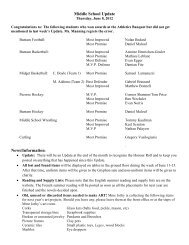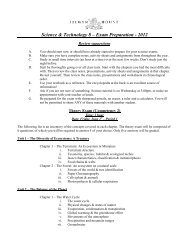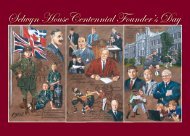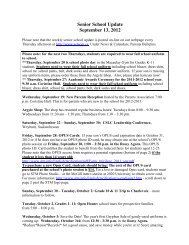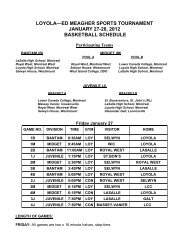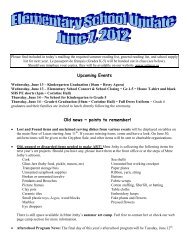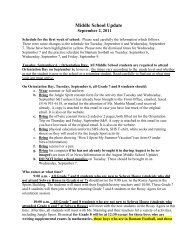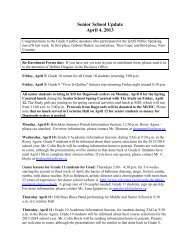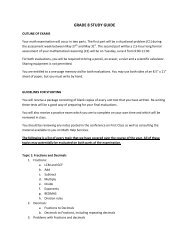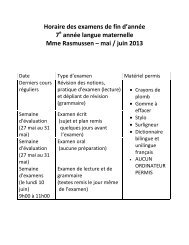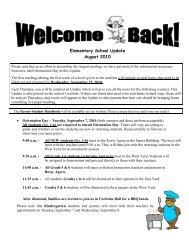Senior English Critical Writing Handbook - Selwyn House School
Senior English Critical Writing Handbook - Selwyn House School
Senior English Critical Writing Handbook - Selwyn House School
You also want an ePaper? Increase the reach of your titles
YUMPU automatically turns print PDFs into web optimized ePapers that Google loves.
Our opinion of a fictional character is influenced both by what others say about him and by theway others react to him. We must, however, qualify our acceptance of another character’s viewby considering how reliable he is, and we must infer our own views from the external words andgestures of the other characters.Physical ExternalsA character’s physical appearance may reveal his nature; but while descriptions of his appearanceare usually given to us directly, we are usually asked to make our own inferences fromthem. A character’s surroundings (clothes, possessions, environment) also reveal his nature.Such details as John Doe’s turned-up collar and low-slung jeans, or Andy Smith’s reading of TheAtlantic Monthly both individualize characters and put them into recognizable social groups, thussetting them off from many other people. Be careful not to make this aspect part of your analysisunless it forms a truly major part of the characterization, so that what the character looks likeagainst the background of his environment makes a difference to the action.SpeechThe student should try to learn as much about character through the way he speaks as throughwhat he says. The grammar, sentence structure, vocabulary—all the elements of style—revealthe social and educational level of the character and demonstrate how his mind works.Revelation of ThoughtsThe most important traits of any character involve the urges that struggle against one another inhis mind. Much modern literature replaces outward action with the inner action of the struggle ofone set of urges against another. The portrayal of internal conflict often occupies a lengthypassage of direct introspection called interior monologue. Following the example of JamesJoyce, many modern authors attempt in their interior monologues to mirror realistically both theform and content of reverie: instead of well-rounded sentences, the author uses parts of sentencesand odd punctuation; instead of centering on one group of thoughts, the author puts thoughtsdown as they might really occur—in visual jumbles of disordered associations. Suchunconventional monologue is called the stream of consciousness because in it the surface litter ofthe mind floats uneasily on the deep currents and desires that well up from the unconscious levelof the mind.Parallel and ContrastMajor characters often have friends or enemies who help to reveal character either by showingthe same traits themselves or by showing opposite traits. A few such characters have specialnames. A confidant (confidante is the feminine form) is usually a friend to whom the protagonistreveals his important concerns. The conversations between protagonist and confidant allow theauthor to reveal the thoughts of the protagonist without resorting to artificial interior monologue.They also allow him to develop the theme fairly explicitly.So, too, do conversations between protagonists and foils (characters whose salient traits or majordecisions contrast with those of the protagonists in such a way as to make the protagonists’characters appear more clearly, as the setting (foil) of a jewel heightens the brilliance of thejewel). Sometimes a foil is so important to the action that he represents one whole side of theconflict that generates that action; in such a case we call the foil the antagonist. The student must28



